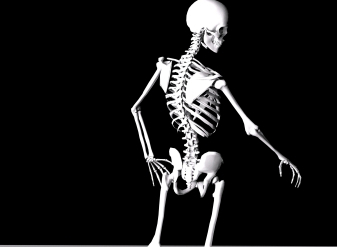The first rib and the shoulder
Written by: Paul Kochoa, PT, DPT, OCS, CKTP, CGFI
Let me tell you a story. I had this patient come see me the other day, complaining of shoulder pain when he was reaching overhead. He went to the gym regularly, lifted weights, did cardio, but when he did overhead presses with dumbbells, his shoulder started getting painful. Later, he had difficulty with reaching into the cupboards in his kitchen, and getting dressed. Sound familiar? Shoulder pain can happen to anyone and can limit everyday activities. Let me tell you a technique that I used on him to restore his flexibility and normal range of motion.
This patient had pain at the end ranges of reaching overhead, otherwise his shoulder mobility was good. One thing that I looked at was the thoracic spine and his shoulder blade movement. We worked on both, increasing the mobility of his middle back and stability of his shoulder blade, but he was still having pain at end range.
That’s when I tried working on his first rib. Sounds weird, but mobilizing his first rib totally cleared up his shoulder. Like the Brian Mulligan principle, mobilizations with movement can improve mobility and restore function. Sometimes, the mobilization doesn’t make sense, but the bottom line is that if it works to decrease pain and increase mobility, then use it.
For this patient, I had him lying on his back, raised his arm overhead and back as far as he could. Then I held down his first rib and the other soft bits around the area, and had him repeat the maneuver a couple times. Afterwards, I removed my hand and had him repeat the first motion to compare. BOOM! Increased motion with no pain. Totally free motion through his shoulder. Magic? Not really. Remember, structures in the body are all connected and related to movement. Test a movement, perform the mobilization, and then re-test. If it’s better, then use the mobilization…
Have a tight shoulder? Want to repeat the same thing at home? Here’s how. First, consult your medical professional or physiotherapist before attempting this maneuver, a thorough evaluation may be needed to screen out other issues and if this one intervention would be indicated for your problem. Second, get a lacrosse ball or other suitable hard spherical object (a lacrosse ball works best). Third, lie on your back with the ball nestled in between your shoulder blade and neck. Fourth, keeping pressure on the ball with your upper back, raise your arm overhead until your bicep is next to your ear. Work your arm around in this position, then return to the starting position. Try repeating for 1-2 minutes. Re-test motion afterwards.
Caution: There are some important blood vessels and nerves in that area where you’ll be putting that ball. Don’t continue this maneuver if you’re feeling nauseous, light headed, or feel tingling down the arm.
If you would like more information, please call Professional Physical Therapy and Training at 973-270-7417. Our offices are located within the YMCA locations in Madison and Summit, NJ. You do not need to be a member of the YMCA to visit with us.
Image courtesy of farconville / FreeDigitalPhotos.net